Montana is a unique state with a rich history. Long before becoming a part of the United States, Montana was first home to many notable indigenous peoples, including the Crow, Cheyenne, and Salish, among many others. In 1803, the United States acquired all of Montana east of the Continental Divide through the Louisiana Purchase. President Thomas Jefferson sent the Lewis and Clark Expedition to explore the new territory, and they passed through Montana in 1805 and 1806. During the 19th century, fur trade and mining boomed in Montana while conflicts between settlers and indigenous peoples increased. On November 8, 1889, over 80 years after the Louisiana Purchase, Montana became the 41st state. Given its rich history, Montana is home to many fascinating historic places. This article explores the 10 coolest National Historic Landmarks in Montana.
National Historic Landmarks are historically significant places in the United States. These places are important to the United States’ historic and cultural heritage. There are over 2,500 National Historic Landmarks in the U.S., 28 of which are in Montana.
1. Pictograph Cave

The three caves of Pictograph Cave State Park contain up to 2,100 years old pictographs.
©Jacob Boomsma/Shutterstock.com
Pictograph Cave is the site of three caves featuring indigenous paintings. The caves were first excavated in 1937, and around 30,000 artifacts were found there. Pictograph Cave is a part of the 23-acre Pictograph Cave State Park, just five miles south of Billings. The park features a loop trail to view the caves and interpretive signs that explain the paintings and artifacts.
Pictograph Cave became a National Historic Landmark on July 19, 1964.
2. First Peoples Buffalo Jump
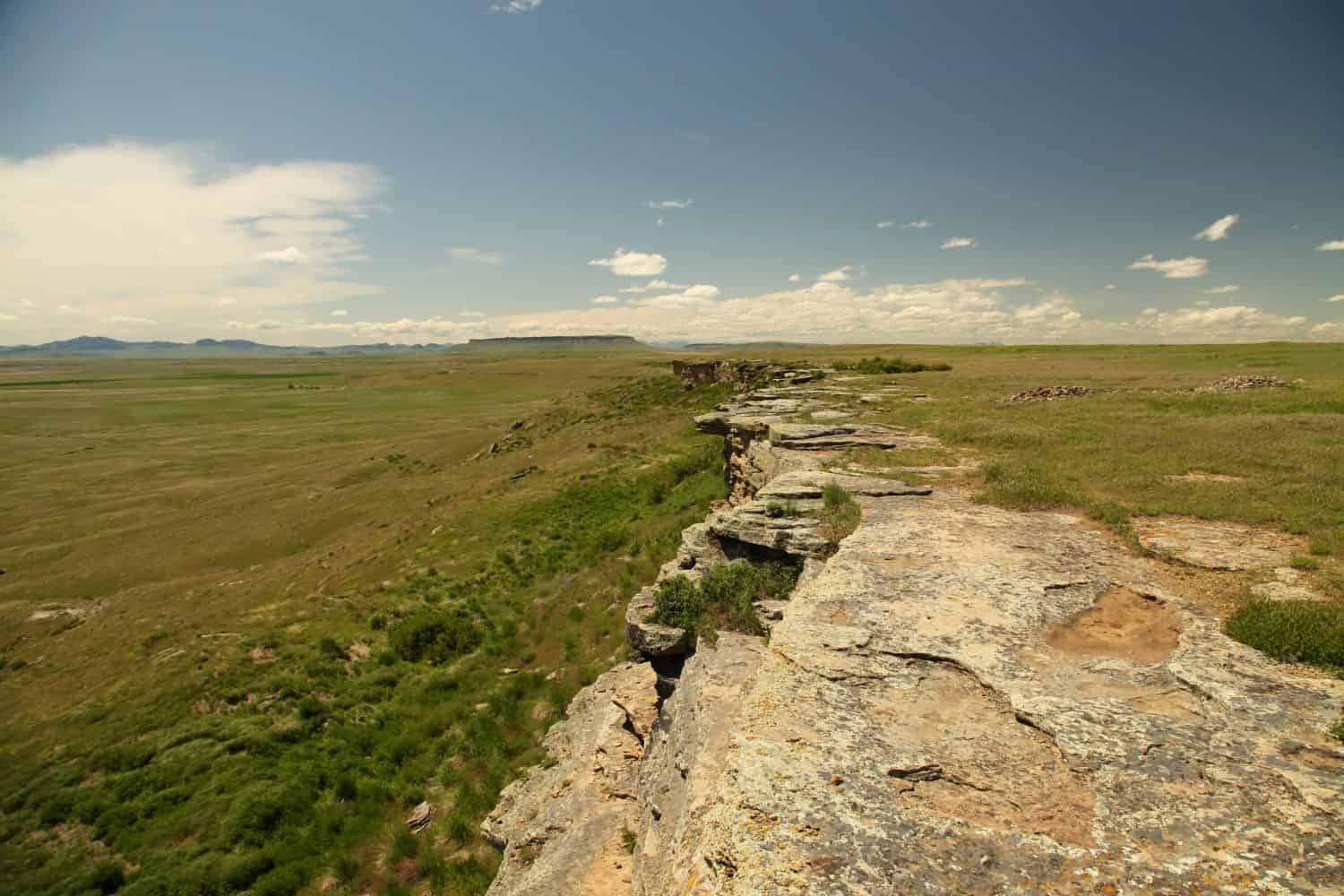
Buffalo
jumps are historic bison hunting sites.
©Nikki Yancey/Shutterstock.com
First Peoples Buffalo Jump is the site of the largest buffalo jump in North America. Buffalo jumps are cliffs where indigenous people would historically hunt bison by herding them to the cliff’s edge. First Peoples Buffalo Jump State Park is approximately 15 miles west of Great Falls.
First Peoples Buffalo Jump was designated a National Historic Landmark on July 21, 2015.
3. Bannack Historic District
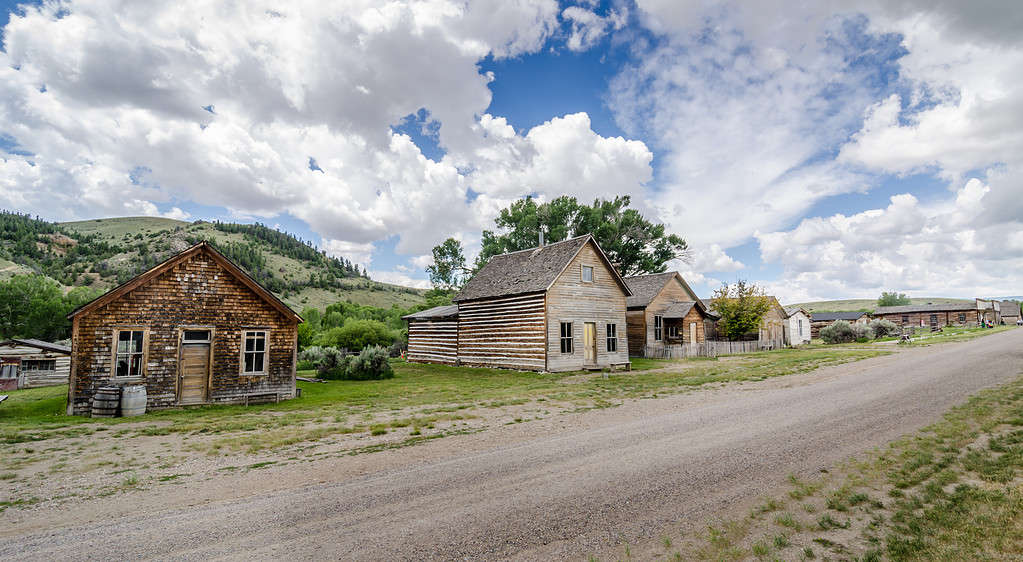
Bannack is one of Montana’s many ghost towns.
©iStock.com/Mantas Volungevicius
The Bannack Historic District is the site of the former gold rush town of Bannack. Montana’s first major gold discovery was in Bannack in 1862. Bannack was the capital of the Montana Territory in 1864 until the capital moved to Virginia City. The town was named for the nearby Bannock indigenous tribe. Mining and blacksmithing were the major industries of Bannock until its decline.
Bannack Historic District became a National Historic Landmark on July 4, 1961.
4. Butte–Anaconda Historic District
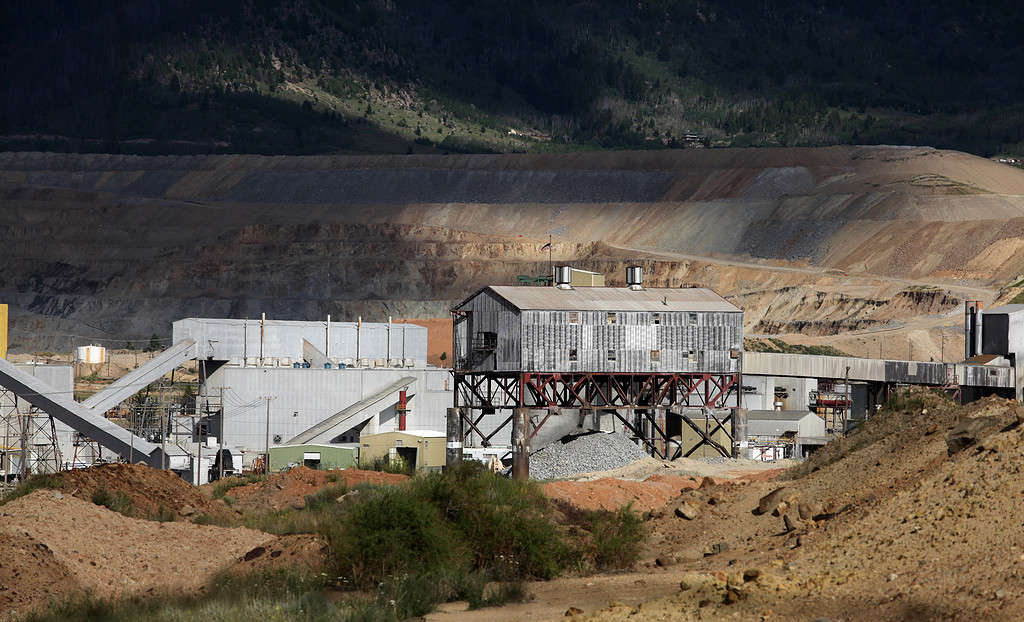
Sixty historic structures remain in the Butte–Anaconda Historic District.
©Meg McWhinney/iStock via Getty Images
The Butte–Anaconda Historic District is a collection of historic buildings in a region that produced one-third of the world’s copper in the 20th century. It is historically important for its copper mining and role in the American labor union movement. Miners in Butte began forming a union around 1878, and members of that union played important roles in creating the Western Federation of Miners, the Industrial Workers of the World, and the Congress of Industrial Organizations.
Butte–Anaconda Historic District became a National Historic Landmark on July 4, 1961.
5. Fort Union Trading Post

Built in 1828, the Fort Union Trading Post was important to developing Montana’s fur trade.
©Zack Frank/Shutterstock.com
The Fort Union Trading Post was a central fur trading post on the Missouri River. It is located on the border of Montana and North Dakota, and the 444-acre National Historic Landmark includes land in both states.
Fort Union Trading Post became a National Historic Landmark on July 4, 1961.
6. Pompey’s Pillar
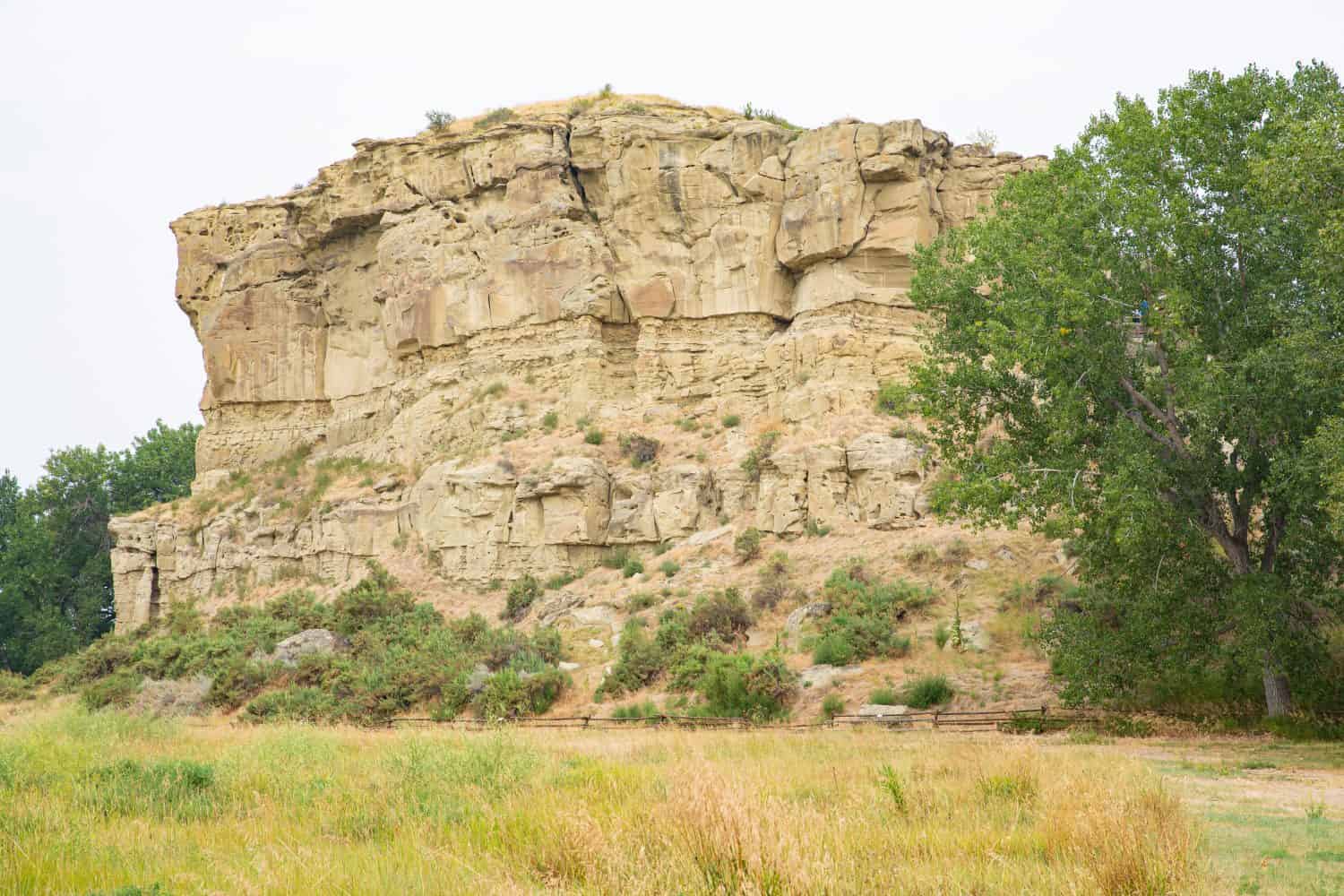
Located on the Yellowstone River, it was a landmark of the Lewis and Clark Expedition.
©Traveller70/Shutterstock.com
Pompey’s Pillar is a large rock formation that features indigenous petroglyphs and William Clark’s signature of the Lewis and Clark Expedition. The site is named after Sacagawea’s son Jean Baptiste Charbonneau, whom William Clark nicknamed “Pompey.” It is 25 miles northeast of Billings.
Pompey’s Pillar was designated a National Historic Landmark on July 23, 1965.
7. Deer Medicine Rocks
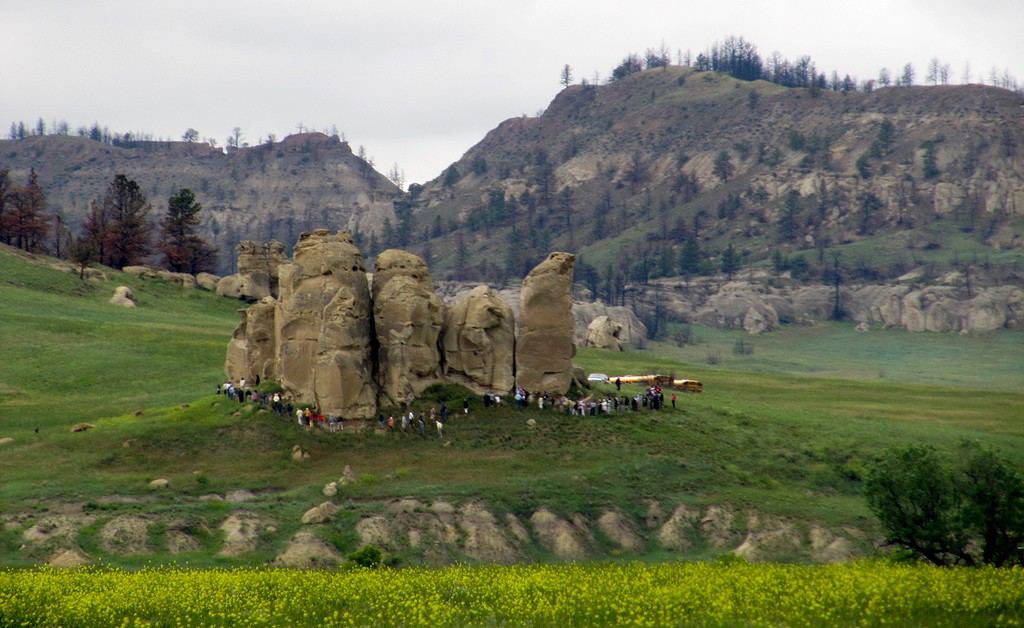
The Deer Medicine Rocks bring to mind the Great Sioux War.
The Deer Medicine Rocks is a rock formation near southeastern Montana’s Northern Cheyenne and Crow Reservations. This site was significant to the Battle of Little Bighorn, where the combined Lakota Sioux, Northern Cheyenne, and Arapaho tribes defeated the United States Army. It is the site of Sitting Bull’s sun dance in 1876, where he prophesized that the combined indigenous peoples would defeat the United States Army. Deer Medicine Rocks is the only National Historic Landmark associated with the Great Sioux War that is not a battlefield. The Little Bighorn Battlefield National Monument is 47 miles west of Deer Medicine Rocks. Deer Medicine Rocks is on private property; the only way to visit is with a tribal member.
Deer Medicine Rocks was designated a National Historic Landmark on March 2, 2012.
8. Charles M. Russell House and Studio

The C.M. Russell Museum Complex is located in Great Falls.
Charles Marion Russell was an American frontier painter who lived from 1864-1962. His paintings depict Western landscapes, cowboys, and indigenous people. Charles M. Russell’s house and studio in Great Falls are now a National Historic Landmark and the C.M Russell Museum museum. Visitors can explore the artist’s home as well as his paintings. Russell’s home and studio contain his and his wife’s furniture, which dates back to the 19th and early 20th centuries. Additionally, the C.M. Russell Museum offers free virtual tours of its exhibitions.
Charles M. Russell House and Studio was designated a National Historic Landmark on December 21, 1965.
9. Virginia City Historic District
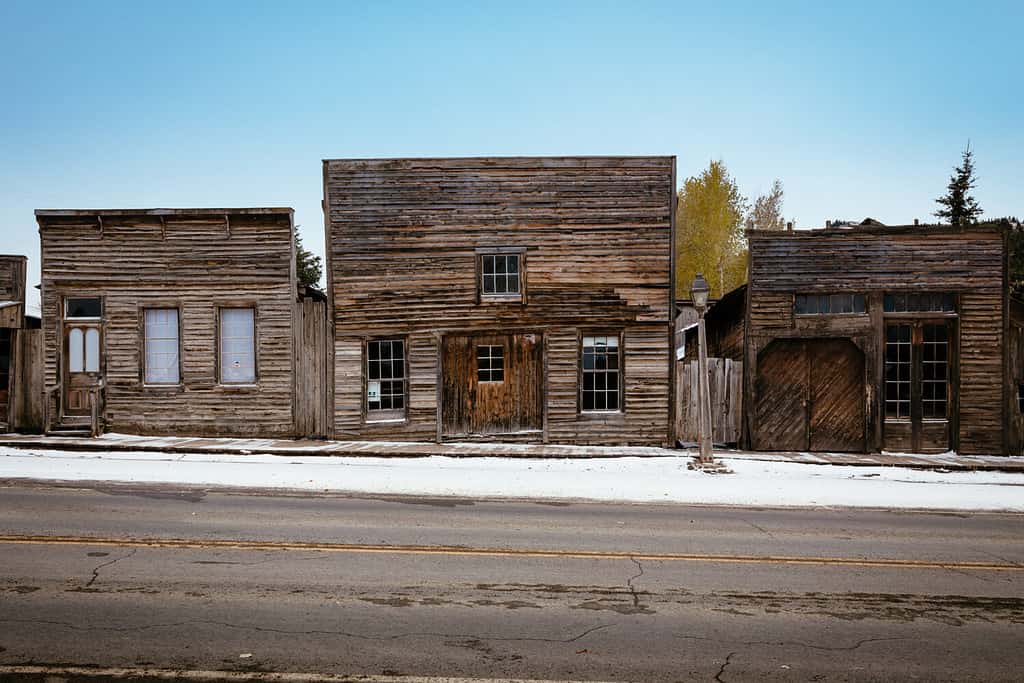
Virginia City served as Montana’s capital for 10 years.
©Atmosphere1/Shutterstock.com
The Virginia City Historic District encompasses Virginia City and much of the Alder Gulch in which the city lies. It was a gold rush town featuring extensive Alder Gulch mining operations. The entire area is a whopping 20,000 acres—some Virginia City Historic District buildings date back to the 1860s. One of the most famous buildings in the historic district is the Madison County Courthouse, which dates back to 1875.
The Virginia City Historic District was designated a National Historic Landmark on July 4, 1961.
10. Chief Plenty Coups Home

The last traditional chief of the Crow people, Chief Plenty Coups, lived from 1848 to 1932.
©Julie Bonner/Shutterstock.com
Chief Plenty Coups Home is the former home of Chief Plenty Coups, who built the homestead in 1884. His homestead features a log house and a heritage apple orchard. It is on the Crow Indian Reservation, around 36 miles south of Billings.
Chief Plenty Coups Home became a National Historic Landmark on January 20, 1999.
Summary of 10 National Historic Landmarks in Montana
| Rank | Landmark Name | Date Designated | Location | County |
|---|---|---|---|---|
| 1 | Pictograph Cave | July 19, 1964 | Billings | Yellowstone |
| 2 | First Peoples Buffalo Jump | July 21, 2015 | Ulm | Cascade |
| 3 | Bannack Historic District | July 4, 1961 | Bannack | Beaverhead |
| 4 | Butte–Anaconda Historic District | July 4, 1961 | Butte | Deer Lodge and Silver Bow |
| 5 | Fort Union Trading Post | July 4, 1961 | Williston, North Dakota | Richland County, North Dakota, and Roosevelt County, Montana |
| 6 | Pompey’s Pillar | July 23, 1965 | Pompey’s Pillar | Yellowstone |
| 7 | Deer Medicine Rocks | March 2, 2012 | Lame Deer | Rosebud |
| 8 | Charles M. Russell House and Studio | December 21, 1965 | Great Falls | Cascade |
| 9 | Virginia City Historic District | July 4, 1961 | Virginia City | Madison |
| 10 | Chief Plenty Coups Home | January 20, 1999 | Pryor | Big Horn |
The photo featured at the top of this post is © Jacob Boomsma/Shutterstock.com
Thank you for reading! Have some feedback for us? Contact the AZ Animals editorial team.







